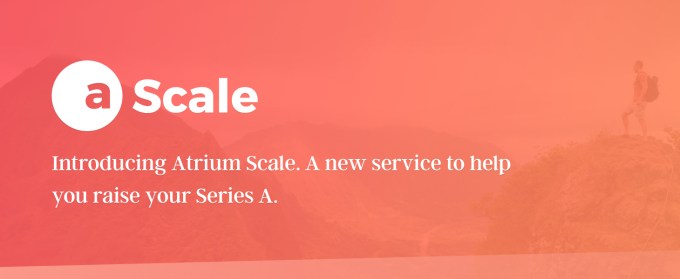This year, artificial intelligence will further elevate the enterprise by transforming the way we work, securing digital assets, increasing collaboration and ushering in a new era of AI-powered innovation. Enterprise AI is rapidly moving beyond hype and into reality, and is primed to become one of the most consequential technological segments. Although startups have already realized AI’s power in redefining industries, enterprise executives are still in the process of understanding how it will transform their business and reshape their teams across all departments.
Throughout the past year, early adopting businesses of all sizes and industries began to reap benefits. AI applications with AI-powered capabilities introduced opportunities to change the way the enterprise engaged customers, segmented markets, assessed sales leads and engaged influencers. Enterprises are on the edge of taking this a step further because of the amount of knowledge and tools leveraging the potential of AI within their entire organization.
“New breakthroughs in AI, enabled by new hardware architectures, will create new intelligent business models for enterprises,” says Nigel Toon, co-founder and CEO at U.K.-based Graphcore. “Companies that can build an initial knowledge model and launch an initial intelligent service or product, then use this first product to capture new data and improve the knowledge model on a continuing basis, will quickly create clear class-leading products and services that competitors will struggle to keep up with.”
The category is evolving, and large companies are finding distinct ways to innovate. They can uniquely tap into decades of industry experience to develop horizontal AI, built for specific industries like healthcare, financial services, automotive, retail and more. These implementations, though, require deep industry expertise and industry-specific design, training, monitoring, security and implementation to meet the high-stakes IT requirements of global organizations.
“In 2018, AI is entering the enterprise. I believe we will see many enterprises adopt AI technology, but the (few) leaders will be those that can align AI with their strategic business goals,” says Ronny Fehling, associate director of Gamma Artificial Intelligence at BCG.
2018: AI will start separating the winners from the losers
Early industry successes (and failures) proved AI’s inevitability, but also the reality that wide-scale adoption would come through incremental progress only. This year, we’ll see AI move from influencing product or business functions to an organization-wide AI strategy. Expect the winners to move fast and remain nimble to keep implementing off-the-shelf and proprietary AI.
The companies that win the AI talent war will gain exponential advantages, given the category’s rapid growth.
Hans-Christian Boos, CEO and founder of Germany-based Arago, adds: “2018 will be a make or break year for enterprise and the established economy in general. I believe AI is the only viable path for innovation, new business models and digital disruption in companies from the industrial era. General AI can enable these enterprises to finally make use of the only advantage they have in the battle against new business models and giants from the Silicon Valley, or rather giants from the new age of knowledge based business models.”
The AI talent challenge
A boon in enterprise AI will also mean a further shortage of talent. Industries like telecommunications, financial services and manufacturing will feel the talent squeeze the most. The companies that win the AI talent war will gain exponential advantages, given the category’s rapid growth.
Hence, enterprises will try to attract talent by offering a powerful vision, a track record of product success, a bench of early client implementations and the potential to impact the masses. It’s about developing high-functioning and reliable solutions that become a new foundation for clients.
Developers and data scientists, however, are only the beginning. Winning enterprises must adopt their organizational structures that attract a new generation of product managers, sales, marketing, communications and other delivery teams that understand AI. This requires an informed, passionate and forward-thinking group of professionals that will help customers understand the future of work and customer engagement powered by AI.
AI adoption and employee training
Digital transformation, powered in large part by new AI capabilities, requires enterprises to understand how to extract data and utilize data-driven intelligence. Data is one of the greatest assets and essentials in maximizing the value in an AI application, yet data is often underutilized and misunderstood. Executives must establish teams and hold individuals across departments accountable for the successful and ongoing implementation of digital tools that extract full value from available internal and external data.
This transformation into an AI-native organization requires it to hire, train and re-skill all levels of employees, and provide the resources for individuals to adopt AI-powered disciplines that enhance their performance. Most workforce, from top to bottom, should be encouraged to rethink and evolve their role by incorporating new digital tools, often enabled by AI itself.
Expect AI and other digital technologies to become more prevalent in all business disciplines, not only at the application layer, as Vishal Chatrath, co-founder and CEO of U.K.-based Prowler.io emphasises. “Decision-making in enterprise is dominated by expert-systems that are born obsolete. The AI tools available till now that rely on deep-neural nets which are great for classification problems (identifying cats, dogs, words etc.) are not really fit for purpose for decision-making in large, complex and dynamic environments, because they are very data inefficient (needs millions of data points) and effectively act like black-boxes. 2018 will see Enterprise AI move beyond classification to decision-making.”
What’s next
However, the spotlight will shine on data governance as businesses adjust entire departments and workflows around data. In turn, data management and integrity will be an essential component of success as consumers and enterprises gain greater awareness about how companies use customers’ data. This opens a large field of opportunities, but also will require transparency in how companies are using, sharing and building applications on top of customer data to ensure trust.
“Every single industry will be enhanced with AI in the coming years. In the last years there was a lot of foundation work on gathering standardized data and now we can start to use some of the advanced AI techniques to bring huge efficiency and quality gains to enterprise companies,” says Rasmus Rothe, co-founder and CTO of Germany-based research lab and venture builder Merantix. “Enterprises should therefore thoroughly analyze their business units to understand how AI can help them to improve. Partnering with external AI experts instead of trying to build everything yourself is often more capital efficient and also leads to better results.”
The shift toward AI-native enterprises is in a defining phase. The pie of the AI-enabled market will continue to grow and everyone has an opportunity to take a slice. Enterprises need to quickly leverage their assets and extract the value of their data as AI algorithms themselves will become the most valuable part when data has become a commodity. The question is, who will move first, and who will have the biggest appetite.

Powered by WPeMatico








